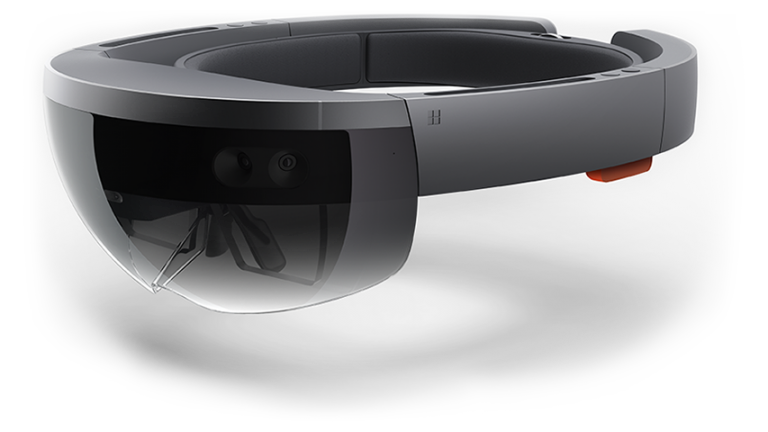Similar to the hologram in Star Wars that delivered Princess Leia’s message for help, two new Microsoft HoloLens devices have been awarded to UCF for researching the creation and transfer of historical information.
Researchers from 10 universities were recently chosen through a grant competition to receive developmental versions of the HoloLens, the first untethered holographic computer that allows users to view high-definition holograms and interact with the physical objects represented in the images. The units are not yet available commercially.
The customized headset weighs less than a laptop computer and allows users to view images with more reality than ever before with an advanced optical projection system that generates multi-dimensional, full-color images with low-latency.
“The HoloLens allows the user to see the mixture of the physical world around them and the 3-D image of a virtual object at the same time. The user can use natural gestures and voice and gaze direction to interact with the system and other users,” said Eileen Smith, director of UCF’s E2i Creative Studio in the Institute for Simulation & Training. “It’s in essence a wireless, self-contained, computerized visualization unit.”
The team of Smith, Lori C. Walters, Robert Michlowitz and Alexia Mandeville from UCF, and Fran Blumberg of Fordham University, were awarded two of the units that have the capability of mapping a room and adding in holograms. Some of the other university recipients were Carnegie Mellon, Dartmouth, Virginia Tech, and University of California/Berkeley.
“We are thrilled to be around the table with such eminent research universities,” Smith said. “It’s an example of how much UCF’s reputation is growing in the research world.”
UCF’s research project, Memory Lens: A Dynamic Tool for Capturing Societal Memory, will explore the capabilities of the HoloLens to facilitate the intergenerational transfer of knowledge about historical periods and gather what the team calls “micro-oral histories” (MOH).
The centerpiece of Memory Lens is intergenerational learning through child-adult interaction, according to the proposal. The experience is an interactive correspondence that recreates the gestures of the HoloLens users to examine preloaded and user-generated content based on a topic or era. Objects can be 3-D models, photographs, video, audio, and related micro-oral histories. Users learn through interaction with the virtual objects, the contribution of oral histories and scanned materials, and the personal reflections that are triggered between users on both ends of the conversation.
“The HoloLens will be the interface for an experience using 3-D and other objects that provide discussion cues to facilitate elders’ sharing of personal MOHs,” the team said. “Users also can capture 3-D objects to be added to the experience, thus creating a dynamic intergenerational sharing and learning platform.”
For example, if a child and grandparent were on the HoloLens and there was an image of a small Saturn V rocket, the child may inquire about the grandparent’s remembrances of the lunar landings.
“The grandparent may then talk of where they were when Neil Armstrong first set foot upon the moon and how it inspired them to become an engineer,” said Walters, content specialist for the HoloLens project and a research assistant professor with the Institute for Simulation & Training and UCF’s Department of History. “The concept utilizes objects, in this instance a model of a Saturn V, to spur intergenerational conversation. They can manipulate the 3-D object and their recorded conversation is the micro-oral history.”
Walters’ research interest is “virtual heritage,” a multi-disciplinary approach using the latest digital technology to explore the past.
Earlier this year, the Microsoft grant program challenged academic institutions to submit ideas to harness the potential of the HoloLens and holographic computing.
“The submissions exceeded our expectations,” Microsoft said. “We were blown away to observe such creative, compelling and promising academic applications for HoloLens across art, medicine, visualization, education and more.”
